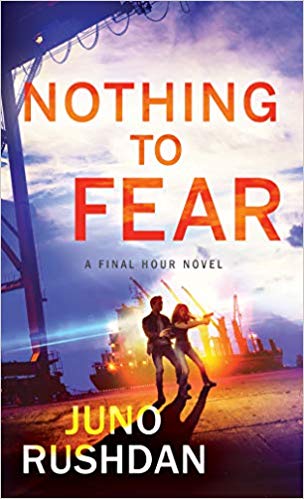 Nothing to Fear (Final Hour #2) by Juno Rushdan
Nothing to Fear (Final Hour #2) by Juno Rushdan Format: eARC
Source: supplied by publisher via Edelweiss
Formats available: paperback, ebook, audiobook
Genres: romantic suspense
Series: Final Hour #2
Pages: 448
Published by Sourcebooks Casablanca on August 27, 2019
Purchasing Info: Author's Website, Publisher's Website, Amazon, Barnes & Noble, Kobo, Bookshop.org
Goodreads
The clock is ticking
Fearsome Gray Box operative Gideon Stone is devoted to his work and his team. He's never given reason to doubt his loyalty...until he's tasked with investigating Willow Harper, a beguiling cryptologist suspected of selling deadly bio-agents on the black market.
He knows she's innocent. He knows she's being framed. And he knows that without him, Willow will be dead before sunrise.
Thrust into the crossfire of an insidious international conspiracy, Gideon will do anything to keep Willow safe...even if that means waging war against his own. With time running out, an unlikely bond pushes limits―and forges loyalties. Every move they make counts. And the real traitor is always watching...
My Review:
The title of this nonstop romantic suspense thriller may be Nothing to Fear, but Gray Box hacker-agent-operative Willow Harper has PLENTY to fear – she just doesn’t know it as this story opens.
She’s being setup to take the fall for the murder, while in Gray Box custody, of an enemy intelligence agent code-named “The Ghost”. But he stopped being a ghost once Willow focused her hacker skills on ferreting him out.
Now the mole in the Gray Box has to eliminate the threat to the organization that they really work for, while keeping their hidden status in place. That’s where Willow came in, unfortunately – or so it seems – for her.
Willow may be a genius programmer, and she has mad skills when it comes to data security, but her everyday, run of the mill life skills security is not so hot.
At first she’s just one of many suspects, but the mole has set Willow up to take the fall for everything, complete with a multi-million dollar account in the Caymans. An account that Willow knows nothing about. It’s not that the account is fake – the money is all too real – but that whoever set up the account was definitely not Willow Harper.
When the evidence turns up, with the black operations of Gray Box already in the cross-hairs, the agency’s director has no choice but to take her into custody.
And Gideon Stone, the agent who is certain that Willow is innocent, feels as if he has no choice but to take Willow and go on the run – in the hopes that he can get to the bottom of the set up, find the mole AND protect Willow – before their enemies manage to take her out and complete the frame.
The forces that are after them are bigger and better organized than Gideon imagined, and the hurricane that crosses their path is just the beginning of the danger that they face.
But the biggest danger for both of them is the damage that they can do to each other. If they’re not carefully, they’ll shoot each other in the heart.
Escape Rating B+: Nothing to Fear is absolutely a thrill-a-minute ride from beginning to end. It has all the classic elements of a great romantic suspense story, with its tough hero, offbeat heroine, secret black ops agency and spies, moles and counterspies at every twist and turn.
Not to mention that desperate run through a hurricane – although what happens on the boat stays on the boat. Or at least it’s supposed to.
As a “black” operation of our very own government – and isn’t that a scary thought all the way around – Gray Box makes a fascinating backdrop for a series. Everyone is a spy, or an agent, or an operative, or all of the above. Everyone has secrets – and everyone has committed unspeakable acts on behalf of the country. And all of their actions can and will be disavowed if that country feels it is necessary.
That Gray Box absolutely HAS to find the traitor within its ranks to keep the entire agency from being “whitewashed” just adds to the tension of the whole story. They have to find the mole, they have to clean up the agency, and they have to help Gideon and Willow however they can in the hope that everyone comes out the other side – except the mole, of course.
At the same time, Gideon and Willow are running as fast as they can, trying to stay half a step ahead of their pursuers, while being all too aware that everyone they left behind is in terrible danger – and not just their colleagues at Gray Box. The enemy is going after their families and friends in an attempt to run them to earth or bring them to heel. It’s a deadly chase.
And at the heart of the story are Gideon and Willow. Neither of them feels worthy of being loved nor is either of them quite sure they are capable of feeling or returning the emotion. Gideon is certain that the deeds he has committed are too dark, that his past is too dirty and that he is too much a creature of violence for anyone to be safe around him. And Willow, while a genius with computers, is at a loss with the unpredictability of human behavior and human emotions.
Which doesn’t stop them from falling for each other. But it sure does stop them from trying to stay together once the danger is over. Or does it?
 The suspense of Nothing to Fear will keep readers on the edge of their seats from the first page to the last. And the story of this couple who make each other strong in their broken places will warm the least romantic heart.
The suspense of Nothing to Fear will keep readers on the edge of their seats from the first page to the last. And the story of this couple who make each other strong in their broken places will warm the least romantic heart.
Nothing to Fear is the second book in the Final Hour series. I haven’t read the first book, Every Last Breath, and had absolutely no problem getting right into the action in this one. But as wrapped up as I was in Nothing to Fear, that first book has certainly climbed higher in my towering TBR pile. After all, I have to read it in time to get the third book in this series, Until the End, late next spring!
~~~~~~ GIVEAWAY ~~~~~~
I’m giving away a copy of Nothing to Fear to one lucky US commenter on this tour!



 Current Giveaways:
Current Giveaways: Blog Recap:
Blog Recap: Coming This Week:
Coming This Week:









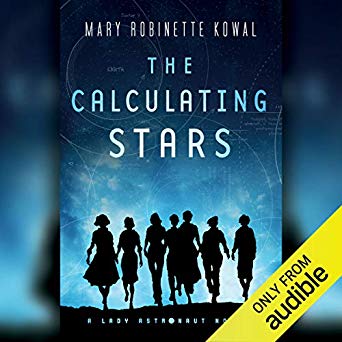 The Calculating Stars (Lady Astronaut, #1) by
The Calculating Stars (Lady Astronaut, #1) by 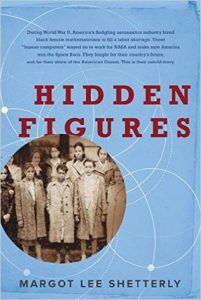 Elma is a computer. In the 1950s, computers were women and not machines, as has been detailed in several recent nonfiction books about the period, notably
Elma is a computer. In the 1950s, computers were women and not machines, as has been detailed in several recent nonfiction books about the period, notably  The way that I was drawn into her story because she represented me in a way that most characters do not gave me a new appreciation for the power of representation in literature and the arts. It made me appreciate the Cuban heritage of Eva Innocente in
The way that I was drawn into her story because she represented me in a way that most characters do not gave me a new appreciation for the power of representation in literature and the arts. It made me appreciate the Cuban heritage of Eva Innocente in  Dearly Beloved (A Match Made in Heaven Book 1) by
Dearly Beloved (A Match Made in Heaven Book 1) by 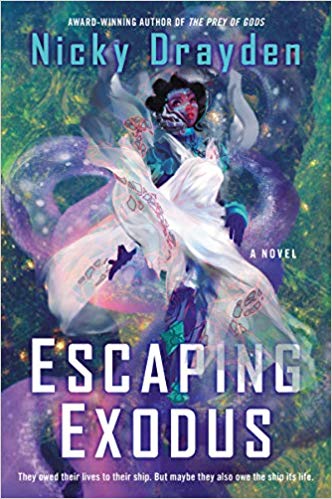 Escaping Exodus by
Escaping Exodus by  The Art of Theft (Lady Sherlock, #4) by
The Art of Theft (Lady Sherlock, #4) by 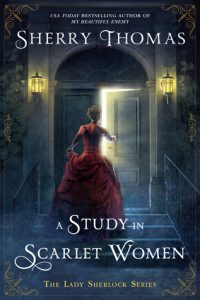 I am an absolute sucker for Sherlock Holmes pastiches, so I’ve been reading the
I am an absolute sucker for Sherlock Holmes pastiches, so I’ve been reading the  Escape Rating B+: Like the previous entries in this series, I have mixed feelings about The Art of Theft. I’m almost feeling as if there are two books combined into one slightly uneasy combination.
Escape Rating B+: Like the previous entries in this series, I have mixed feelings about The Art of Theft. I’m almost feeling as if there are two books combined into one slightly uneasy combination.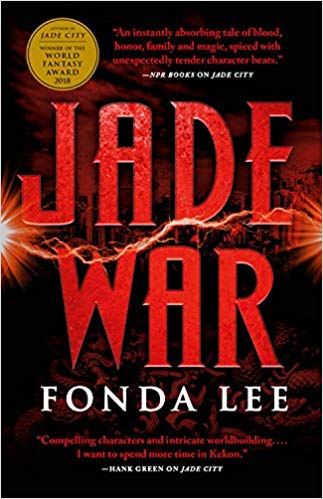 Jade War (The Green Bone Saga, #2) by
Jade War (The Green Bone Saga, #2) by 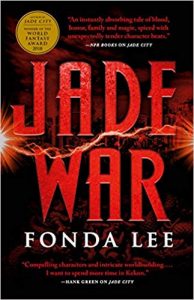 I picked up Jade War just about the minute I finished the absolutely awesome
I picked up Jade War just about the minute I finished the absolutely awesome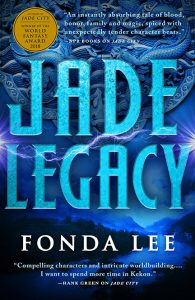 Jade War also takes this story of gangland warfare to a wider stage while telling a tale that provides standout roles for the women as well as the men of the clan AND adds a fascinating dose of world-wide political skulduggery to what was initially an urban fantasy about warring criminal organizations. The Green Bone Saga was a terrific story when it was confined to two families and one city. Now that it has gone world-wide, it is epic in every sense of the word. This is one of those books that just needs a higher grade than A+. Seriously, all the stars for this one.
Jade War also takes this story of gangland warfare to a wider stage while telling a tale that provides standout roles for the women as well as the men of the clan AND adds a fascinating dose of world-wide political skulduggery to what was initially an urban fantasy about warring criminal organizations. The Green Bone Saga was a terrific story when it was confined to two families and one city. Now that it has gone world-wide, it is epic in every sense of the word. This is one of those books that just needs a higher grade than A+. Seriously, all the stars for this one. Current Giveaways:
Current Giveaways: Blog Recap:
Blog Recap: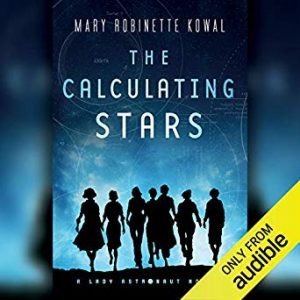 Coming This Week:
Coming This Week:










